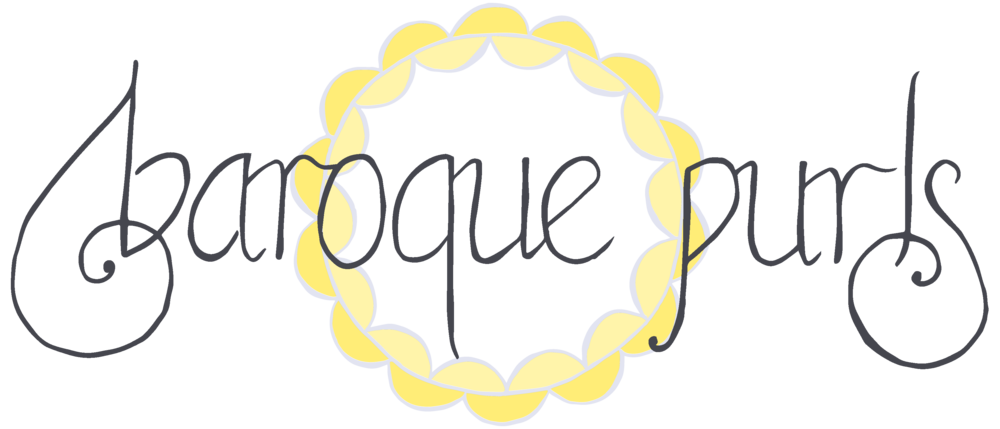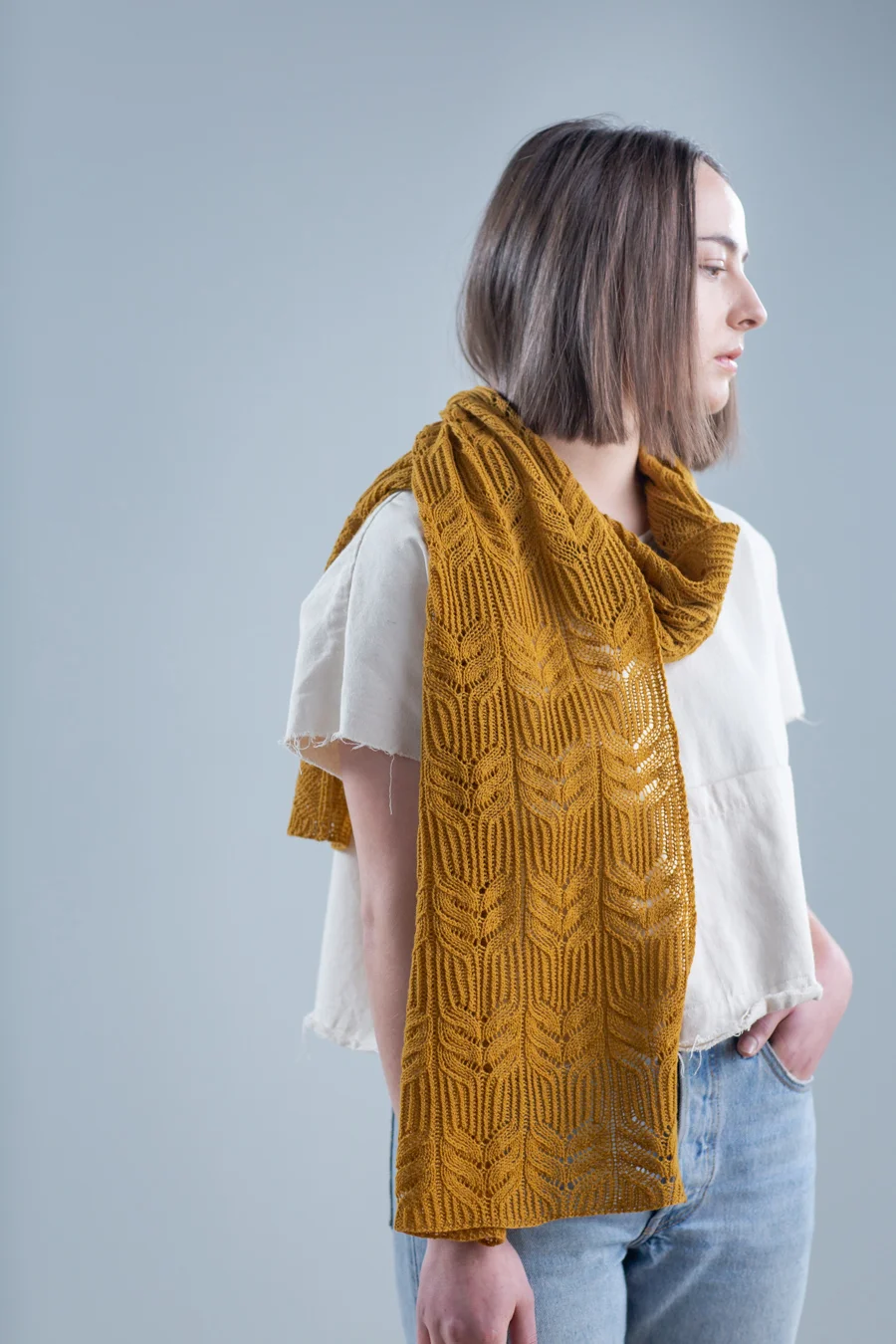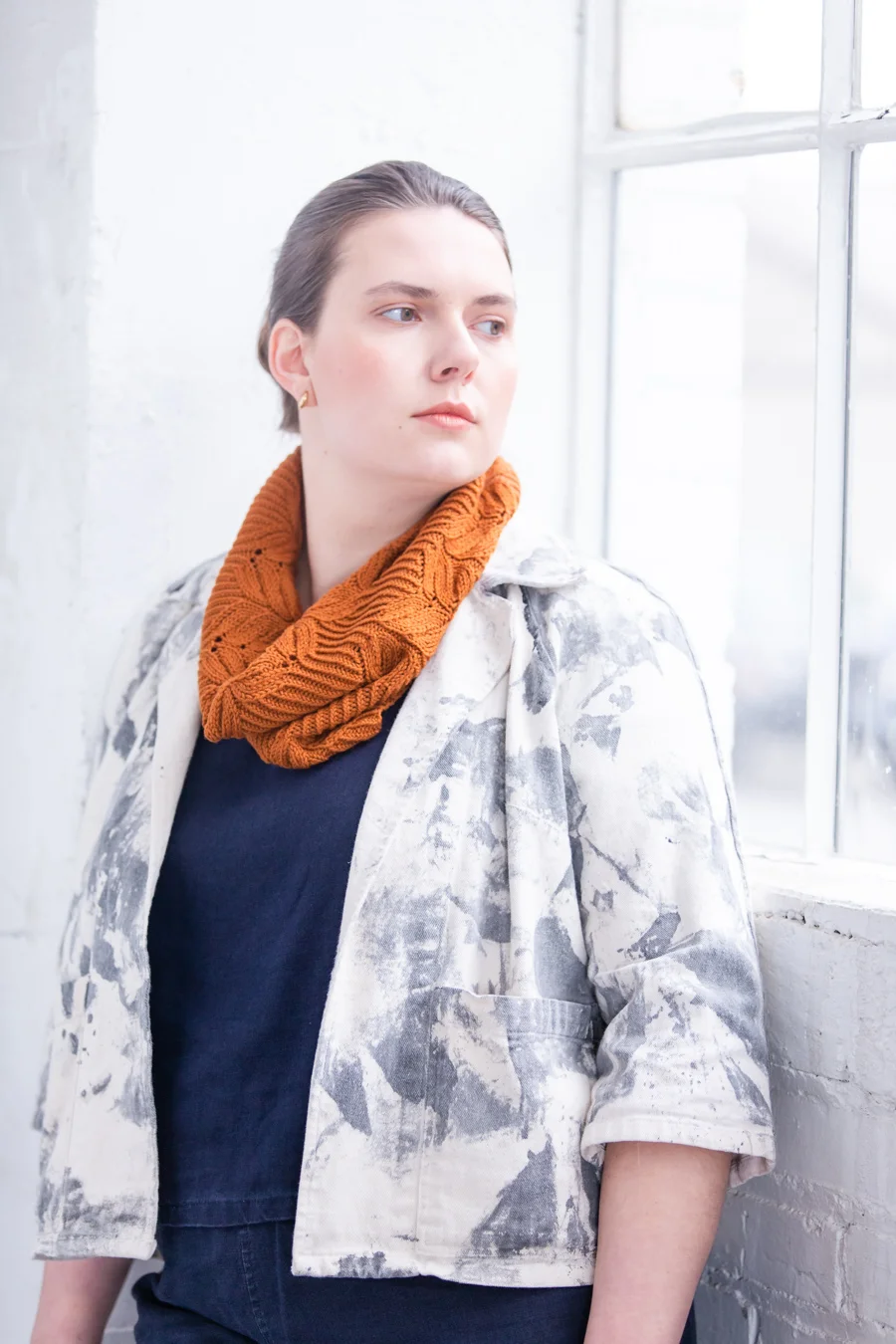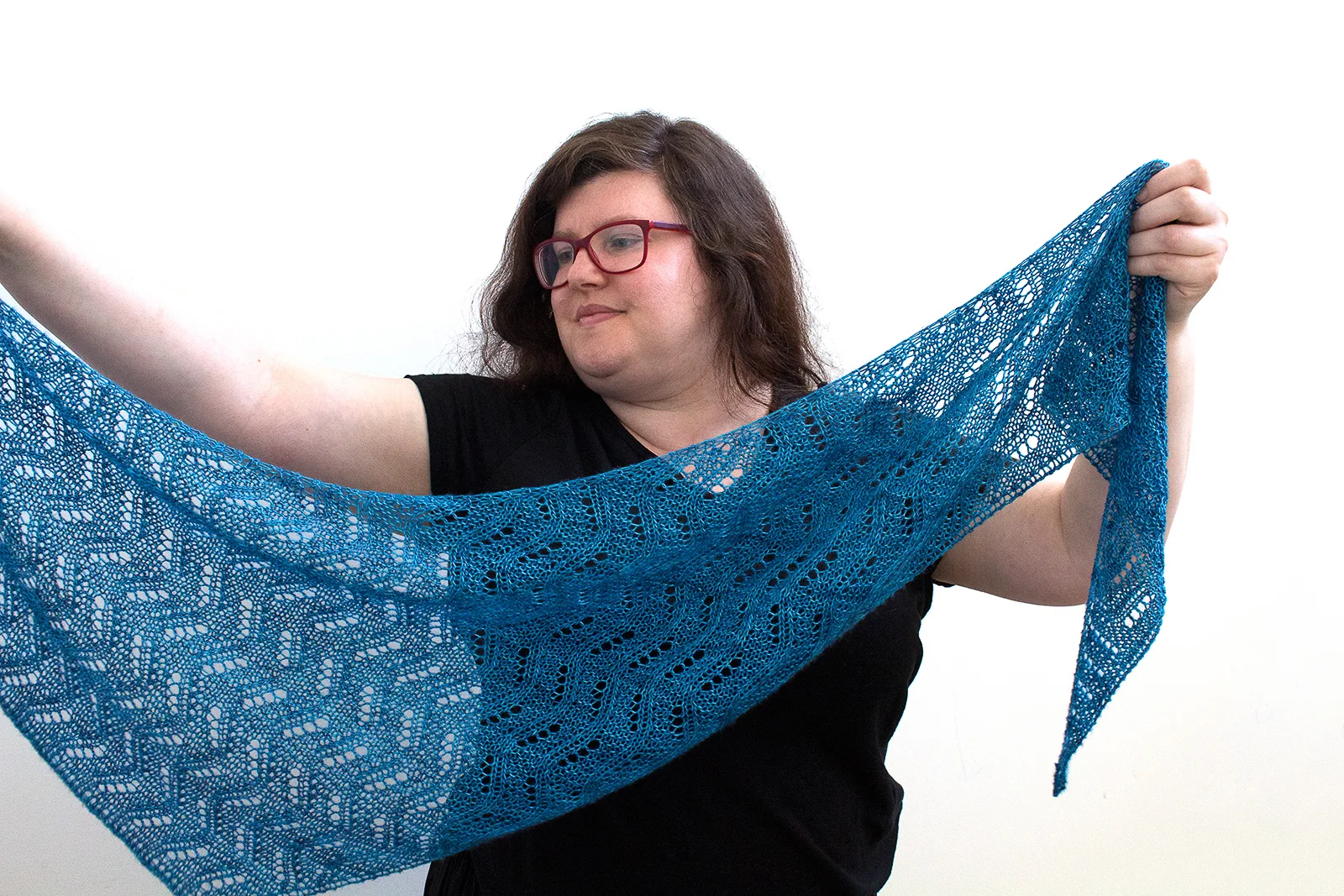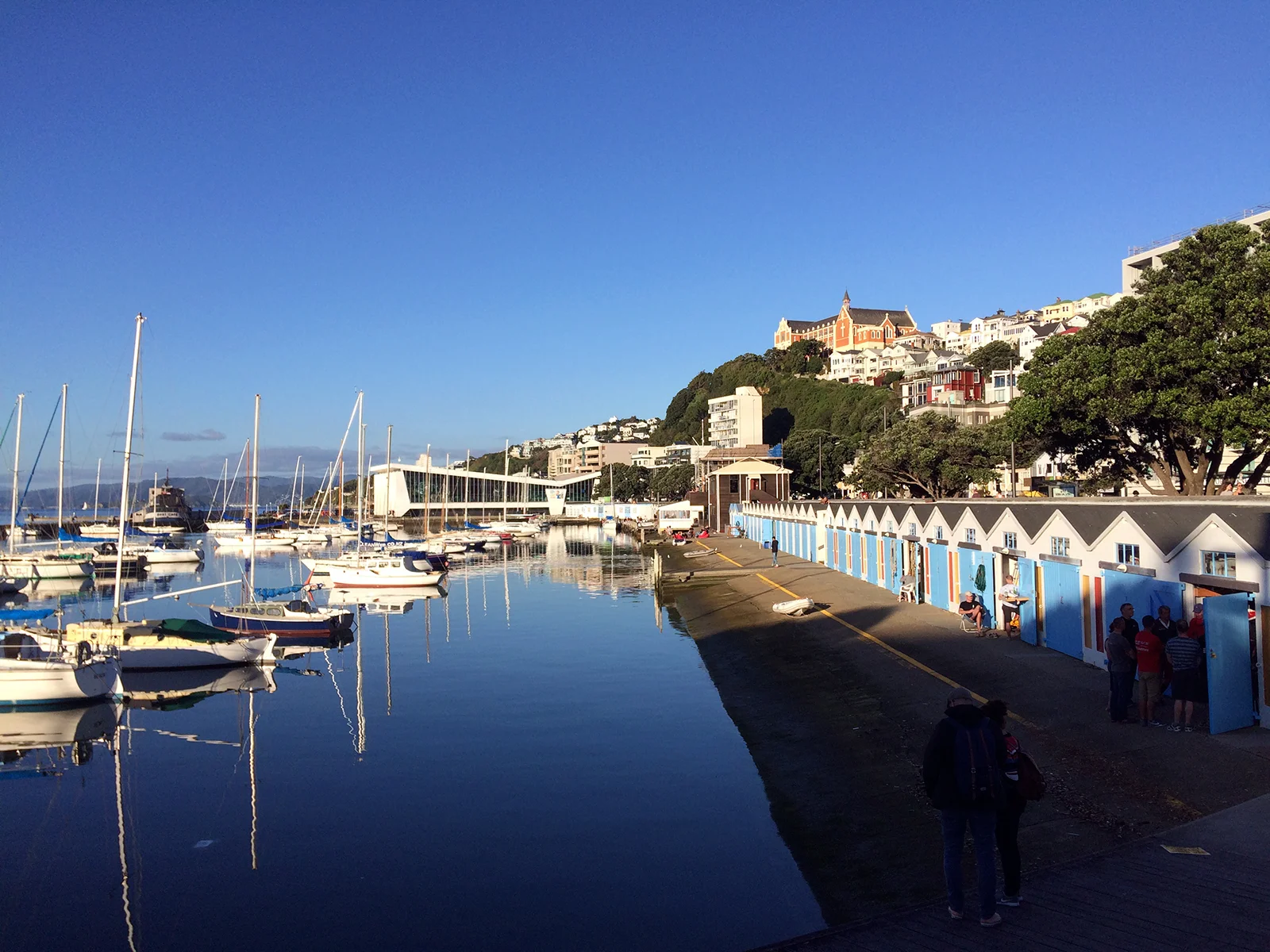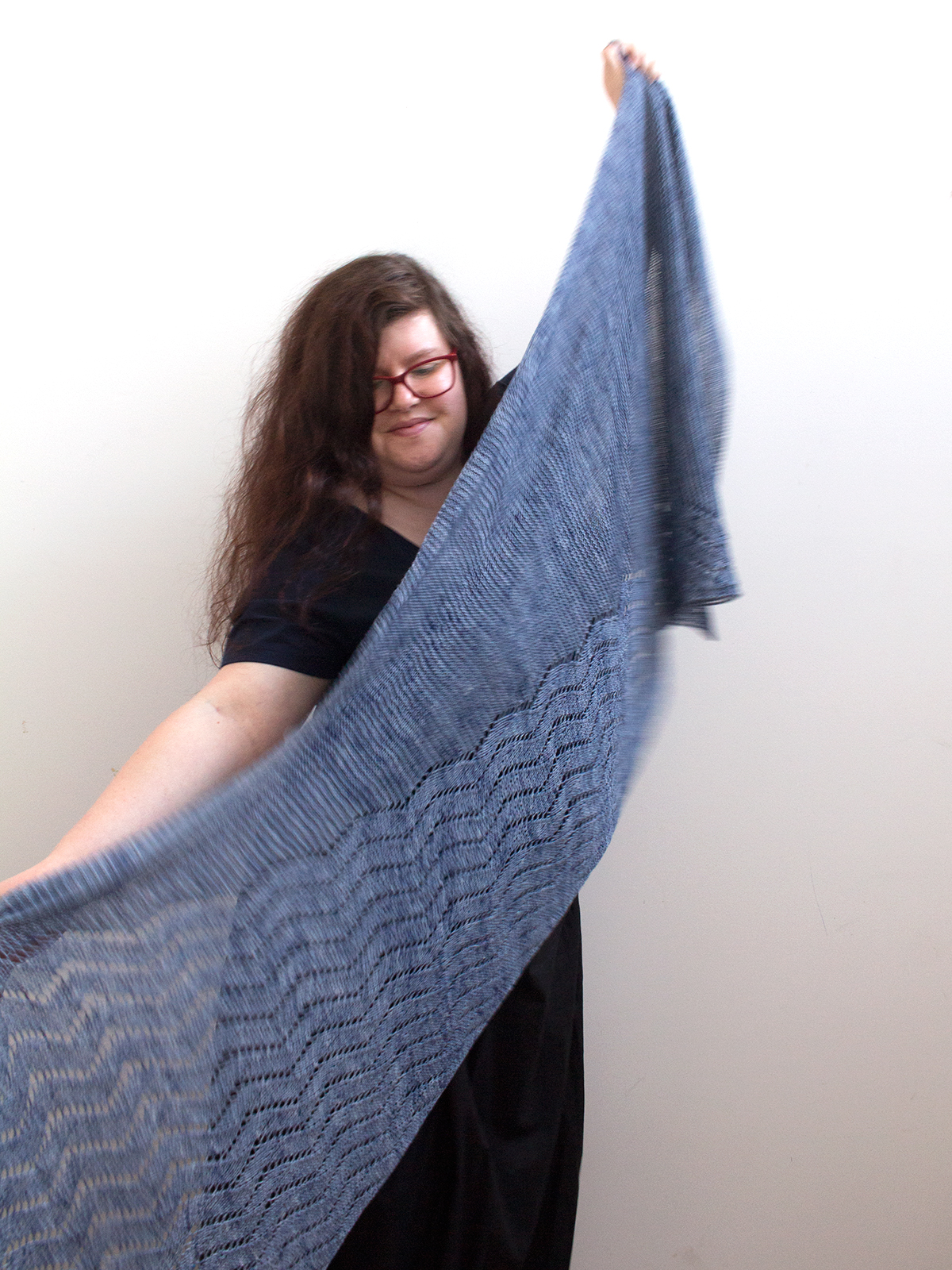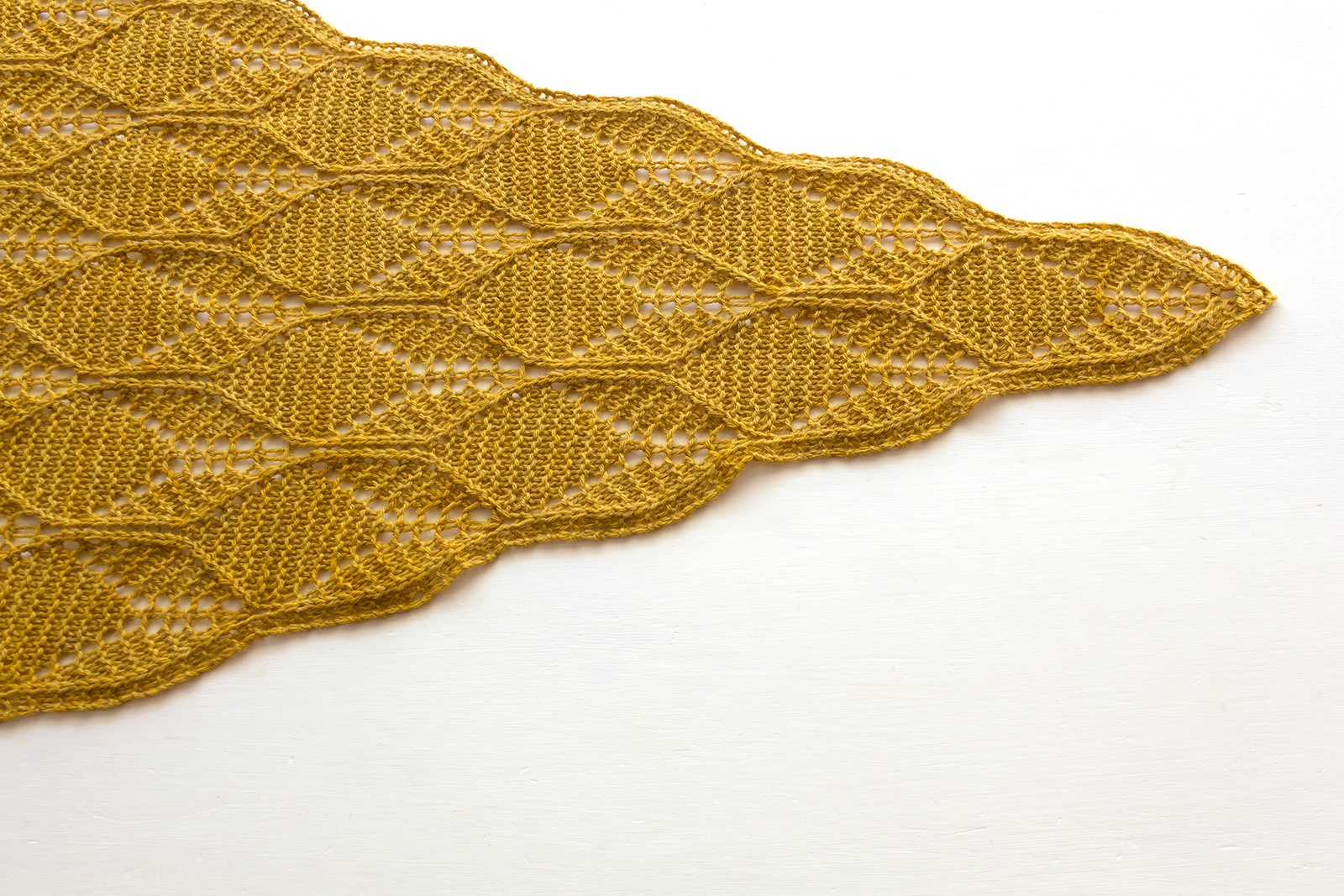I hope you’re in the mood for some texture and lace, because my Ensata Scarf & Cowl and Ensata Hat have just been published as part of Brooklyn Tweed’s Wool People 13! This is my fourth time contributing to Wool People, which is BT’s annual collection in collaboration with guest designers.
The stitch patterns in my Ensata designs are inspired by the gently curving pairs of leaves on my moth orchids. The working title at the time of submitting my ideas was the slightly clumsy ‘Orchid Leaves’, but we switched to ‘Ensata’ after the elegantly curved petals of the Japanese Iris, Iris ensata. The twisted ribbing, which flows into and out of the lace, provides a textural contrast and echoes the structure of a grand domed greenhouse.
Photo by Brooklyn Tweed
The scarf is knit flat from end to end, and the cowl, which is included as a variation together with the scarf pattern, is worked in the round from the bottom up. The hat, available as a separate pattern, is also worked in the round from the bottom up. If you’re not a fan of knitting lace on both right-side and wrong-side rows, the cowl or hat might suit you better than the scarf. I know I found these stitches much more straightforward to work in the round!
The Ensata Scarf has been designed for either laceweight or fingering-weight yarn, and is shown here in Brooklyn Tweed Vale in the colourway Klimt. You will need 3 skeins of Vale or 6 skeins of Peerie to knit the scarf. The cowl and hat are both designed for fingering-weight yarn, and are shown in Brooklyn Tweed Peerie in Patina and Fleet (respectively). You will need 2 skeins for the cowl and 1 for the hat.
Both Vale and Peerie have wonderful springiness and stitch definition, which make them ideal for showing off knitted texture. I love the way the twisted ribbing almost looks like it’s been carved into the surface of these knits.
Photo by Brooklyn Tweed
Ensata Scarf & Cowl features:
a delicate scarf knit flat from end to end, and a short cowl knit in the round from the bottom up
alternating bands of lace and twisted ribbing, with organic transitions between the two
scarf dimensions: 68” [172.5cm] in length and 15½“ [39.5cm] width
cowl dimensions: 26¾“ [68 cm] circumference and 12” [30.5 cm] height
scarf requires 1070 yards of laceweight or 1065 yards of fingering-weight yarn
cowl requires 375 yards of fingering-weight yarn
pattern includes charted stitch patterns only
pattern includes both scarf and cowl versions.
Ensata Hat features:
a stretchy beanie knit in the round from the bottom up
a ring of lace contrasts with the all-over texture of twisted ribbing and clean lines of the crown shaping
hat dimensions: 17¾“ [45 cm] in circumference and 8½” [21.5 cm] length, to fit adult head sizes ranging from 19-23” [48-58.5 cm] circumference
requires 163 yards of fingering-weight yarn
pattern includes charted stitch patterns only.
Photo by Brooklyn Tweed
You can purchase the patterns on Ravelry, or from Brooklyn Tweed’s website (Ensata Scarf & Cowl, Ensata Hat). A kit including the Scarf & Cowl pattern and three pre-wound skeins of Vale is also available. And be sure to check out the always-beautiful Lookbook for the collection!
